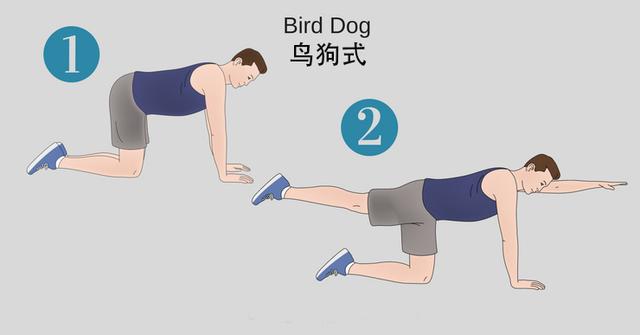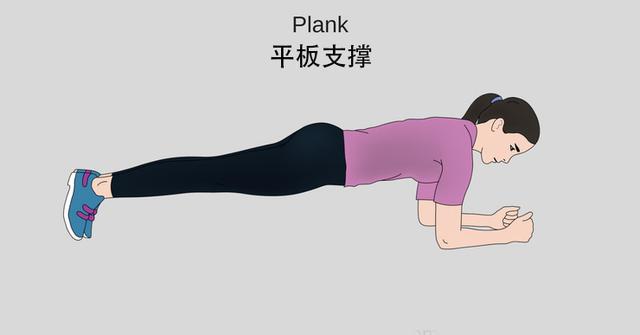6 Stretches To Ease Lower Back Pain
People with lower back pain are most concerned about how to choose exercises. What actions can ease lower back pain? What actions will aggravate the lumbar disc herniation? The following are some suggestions:
1. Avoid choosing any posture that will produce forward flexion lumbar spine. As you know that lumbar disc herniation is caused by the vertebrae bending forward, squeezing the intervertebral disc, and causing the nucleus pulposus to squeeze the fibrous annulus backward. So try your best to avoid leaning forward with the upper body.
2. Avoid exercises with heavy weight and need to use the spine to stabilize or exert strength. Heavy weight will increase the pressure on the lumbar spine and put more pressure on the intervertebral disc between the vertebrae, which will aggravate the lumbar disc herniation.
3. Choose the actions to lengthen the spine. Lengthening the spine will bring space between the vertebrae and intervertebral discs, increase blood flow, and stretch the spine muscles that need to be stretched.
4. Need to enhance core strength. A strong, iron barrel-like abdominal core muscle group is the best way to stabilize and maintain the spine, but do not choose sit-ups (because sit-ups cause the lumbar spine to bend forward).
5. Select the lumbar spine backward bending and stretching actions. The lumbar spine bending backwards and stretching actions are opposite to the formation of lumbar intervertebral disc herniation.
6. Perform gentle stretching exercises on the lower body. In the case of lumbar disc herniation, the soft tissues around the iliac area will be tight and unbalanced, causing weakness of the gluteal muscles, which are the main supporting muscles of the body. If they are weak, they will cause the lumbar spine Compensation and increase the pressure on the lumbar spine, a vicious circle.
According to the above recommendations for the people with lower pack pain to choose training exercises, we’d like to share the following 6 exercises that focus on alleviating or reducing pain.
This set of training exercises includes many "extended" exercises and core stability exercises (core stability exercises have been shown to reduce lower back pain.
1.Spinal decompression:
Spinal decompression is the first thing to treat a herniated or bulging intervertebral disc, because it actually creates a space between the vertebrae, thereby reducing the pressure on the intervertebral disc.

Use a single pole or ring (or anything that can be hung on it), let the body "hang", let the body relax, hold for 30 seconds, and then do 3 times.
2.Standing stretch:
Standing stretching exercises can help you to correct kyphosis every day. Since most herniated discs are caused by poor posture and repeated bending of the spine (especially when the posture is poor), this stretching helps you to keep the disc Push back to the middle position.

Perform this exercise while standing in a good posture, placing your hands on both sides of your lower back.
With the help of both hands, push the pelvis forward and stretch the spine backward.
Extends along the neck, facing the ceiling.
Make 10 times per set, 3 to 4 sets.
3.Cobra posture (lumbar extension):
Cobra stretching helps to push the annulus fibrosus and nucleus pulposus to the center of the disc, thereby improving the healing effect. The purpose of repeated lower back stretching is to "centralize symptoms", which means that the pain from the diseased leg to the foot should be Return to a position closer to the lower back, then reduce the pain.


Lying prone on the floor.
Ran slowly pushing up the elbows while keeping the hips in contact with the floor.
Hold for 10-15 seconds.
Slowly return to the starting position.
4.Cat and Cow Pose:
Cat and Cow Pose is one of the most popular lumbar disc herniation exercises. By combining two yoga poses, the cat and cow stretching exercise can relieve the pressure of the herniated disc by opening the intervertebral disc space. It can also improve the mobility of the spine, which may help relieve the pain of a herniated disc and speed up recovery.

Kneel, knees directly below hips, hands directly below shoulders.
Now the back is flat, straight and the neck is in a neutral position.
Lower to the cow position: Exhale and push down on the spine while keeping the shoulders and hips in a same height.
Push up to cat pose: Inhale and push the spine upward, arching into cat pose.
Maintain a steady breathing in the cat and cow posture.
Cat and Cow poses are held for 10-15 seconds each, and do 4 sets.
5.Bird dog pose:
Bird Dog exercise will help you to strengthen and stabilize your lower back and deep spine muscles. This will help you to maintain a good posture and avoid a herniated disc in the future.

In a kneeling position, with the knees directly below the hips and the hands directly below the shoulders.
Raise the left arm and straighten it forward until it is aligned with the torso; at the same time, kick the right leg to the right until it is aligned with the torso.
Hold this position for 2-3 seconds, and then slowly return to the starting position.
Repeat with the right arm and left leg.
Alternately perform 10 repetitions and do 4 sets.
Ensure that the head, neck and back remain neutral to minimize neck pressure.
6.Plank support:
This "core" exercise will help keep the pelvis in the correct position by strengthening the deep spine muscles and gluteal muscles.

Place the forearm (wrist to elbow) firmly on the yoga mat at the beginning, making sure that the elbow is directly below the shoulder.
Straighten your legs behind you, lift your buttocks away from the yoga mat, rest on your toes.
Tighten your abdomen to ensure that the spine straightens naturally.
Maintain this position for at least 20-30 seconds, then slowly increase to 3 minutes while maintaining deep breathing.
You may choose to spend a day’s rest in bed or on the sofa because you are worried that exercise will exacerbate the herniated disc. But this is not conducive to alleviate and reduce the herniated lumbar disc. The 6 stretching exercises above can help you to reduce symptoms and increase the health of the back.